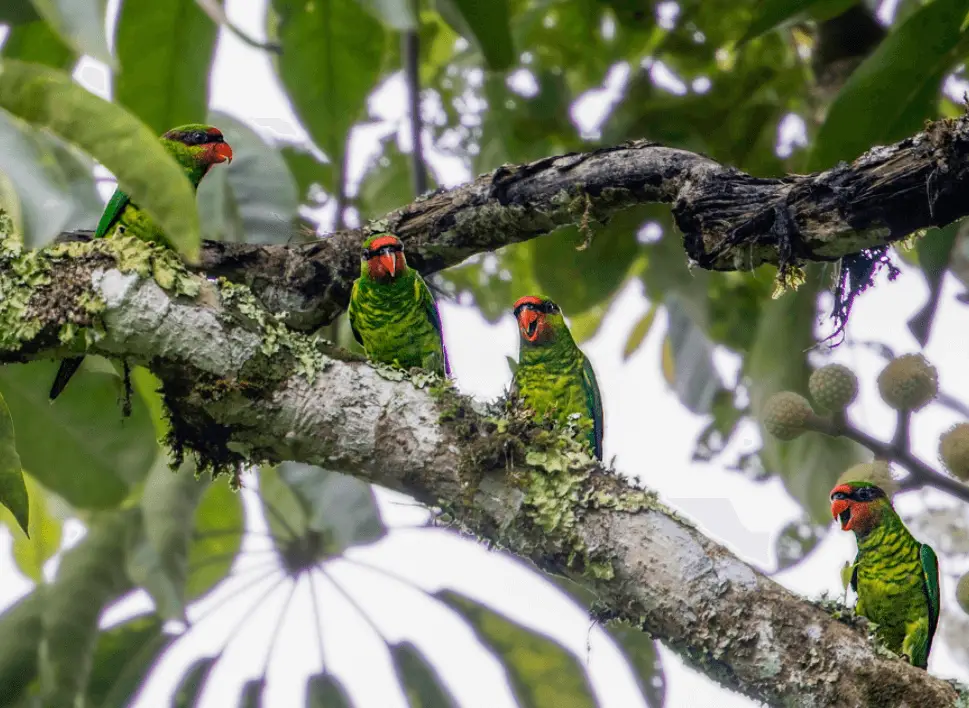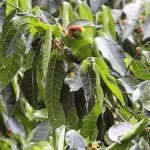
Mindanao Lorikeet 20 cm; 48–62 g. Bill reddish-orange; front of the head from forecrown to chin and anterior ear-coverts red, scaled yellow, shading to green-scaled yellow on rest of crown and face;
a purplish-black line from lores through and behind the eye to nape; underparts yellow broadly scaled green; upperparts green; tail green above, dusky yellowish below.Immature has less red on the face, white orbital skin, and darker bill.
Systematics History
Occasionally placed in genus Psitteuteles. Member of the putative T. chlorolepidotus species group (see below). The population on Mt Malindang is given the subspecific name pistra, but character differences are slight, and intermediate birds are now known from intervening areas. Monotypic.
Subspecies
Monotypic.
Distribution
Montane areas of W, C & S Mindanao, in SE Philippines.
Habitat
Montane forest and forest edge above 1000 m, with daily altitudinal movement, roosting in lower areas in the evening and returning to the higher forest at sunrise.
Movement
Seasonal or nomadic displacements in search of food are unrecorded, but each evening birds make downslope flights to roosting areas and each morning returns upslope to forage.
Diet and Foraging
Mindanao Lorikeet took nectar from trees with scarlet blossoms; nothing else was recorded.
Sounds and Vocal Behavior
Not well documented. Commonest calls a rasping “chrek-chrek” and a disyllabic, more piercing “cheee!-chrek”, given both in flight and when perched. Also soft twittering notes.
Breeding
Breeding condition birds indicate Mar-May. In captivity: apparently two eggs, size 22–22·1 mm × 19–19·1 mm (Harrison and Holyoak 1970); incubation lasting only two (probably three) weeks; Mindanao Lorikeet nestling period c. 5 weeks.
Conservation Status

Not globally threatened. Currently considered Near Threatened, and previously, Vulnerable. CITES II. A BirdLife “restricted-range” species.
Recent fieldwork suggests it is now very uncommon, and that habitat destruction is constraining the lower reaches of its altitudinal range.
Nevertheless, two of its six known mountain sites (Apo and Katanglad) are protected under the National Integrated Protected Areas Scheme (NIPAS), one (Malindang) has been declared a national park and will also qualify under NIPAS, and one (Matutum) is being targeted for early conservation attention.
SOURCE: obirds




















